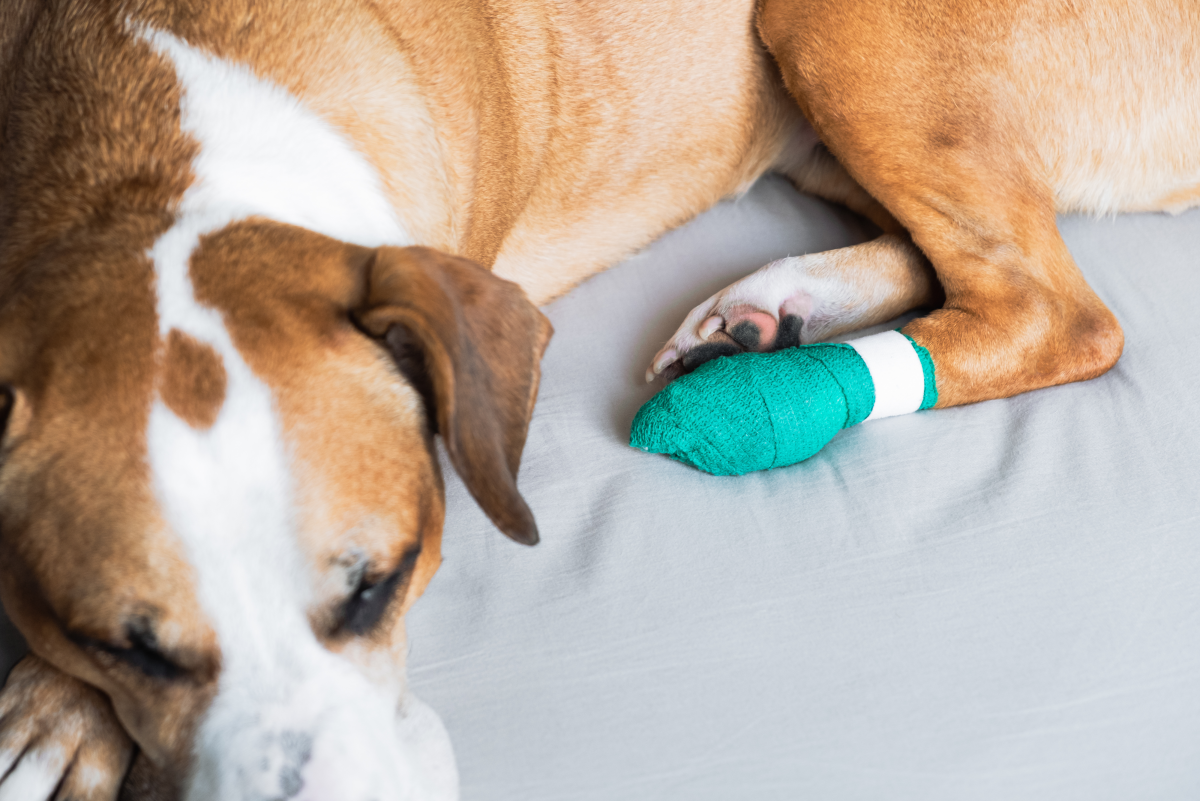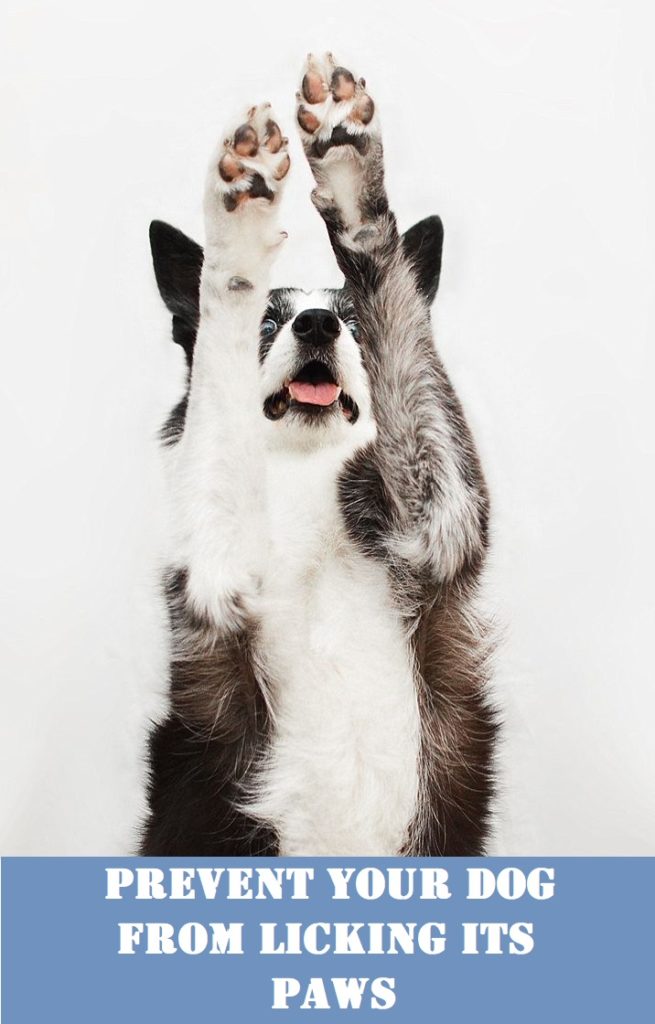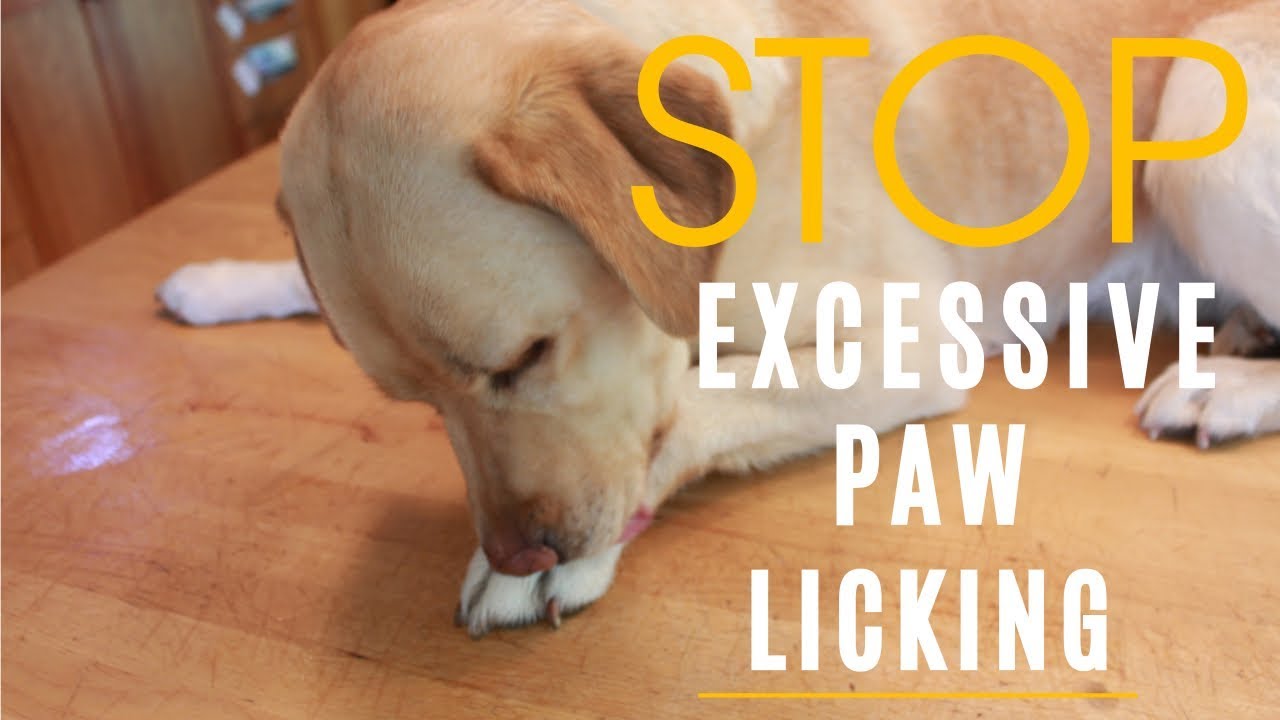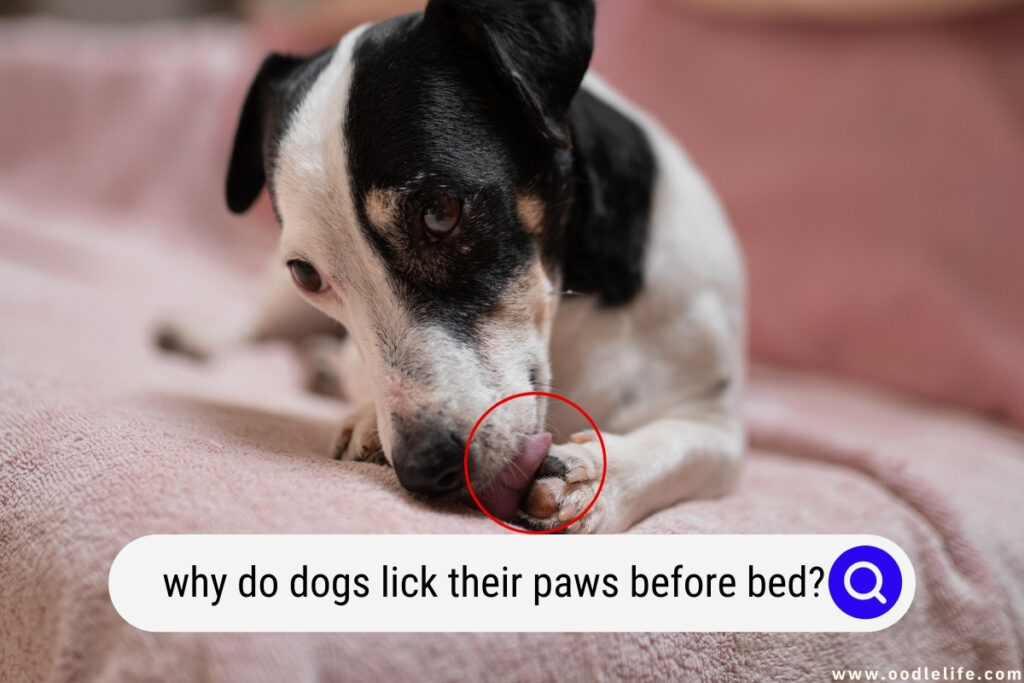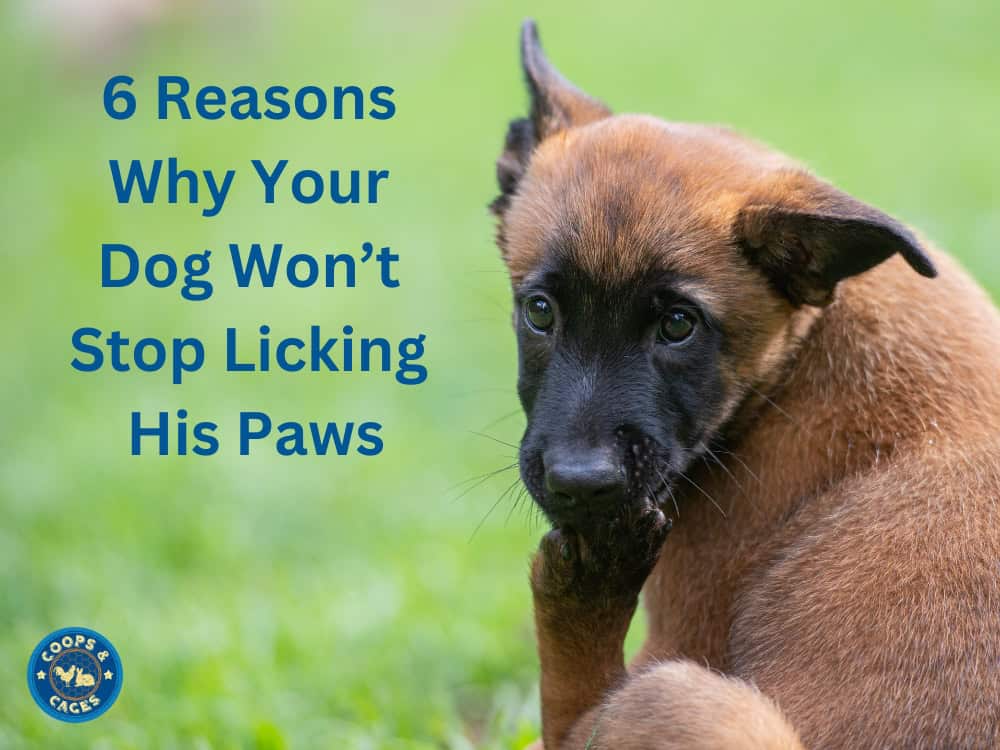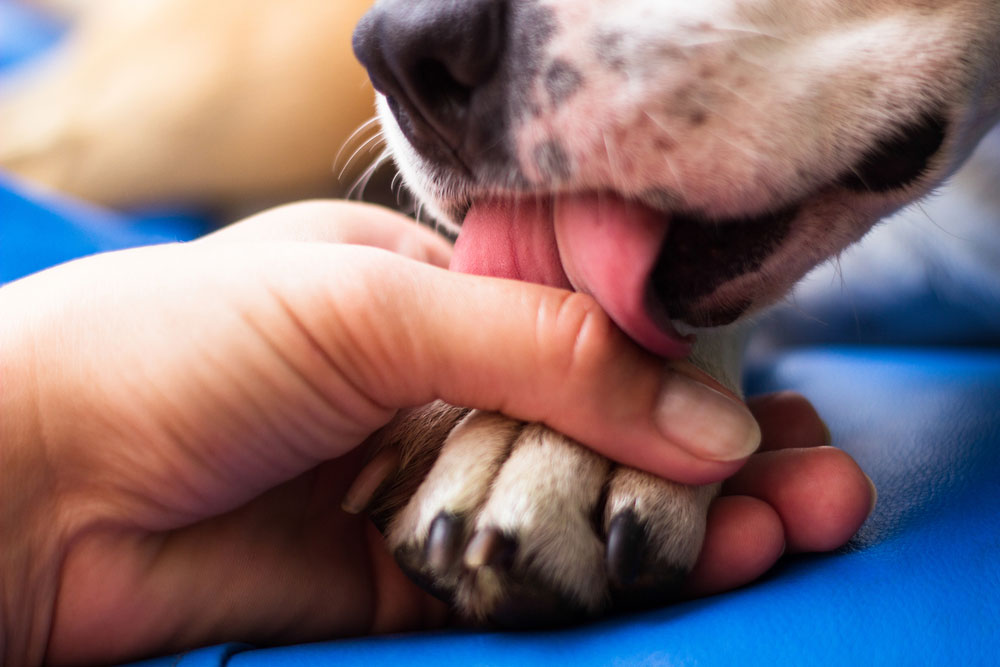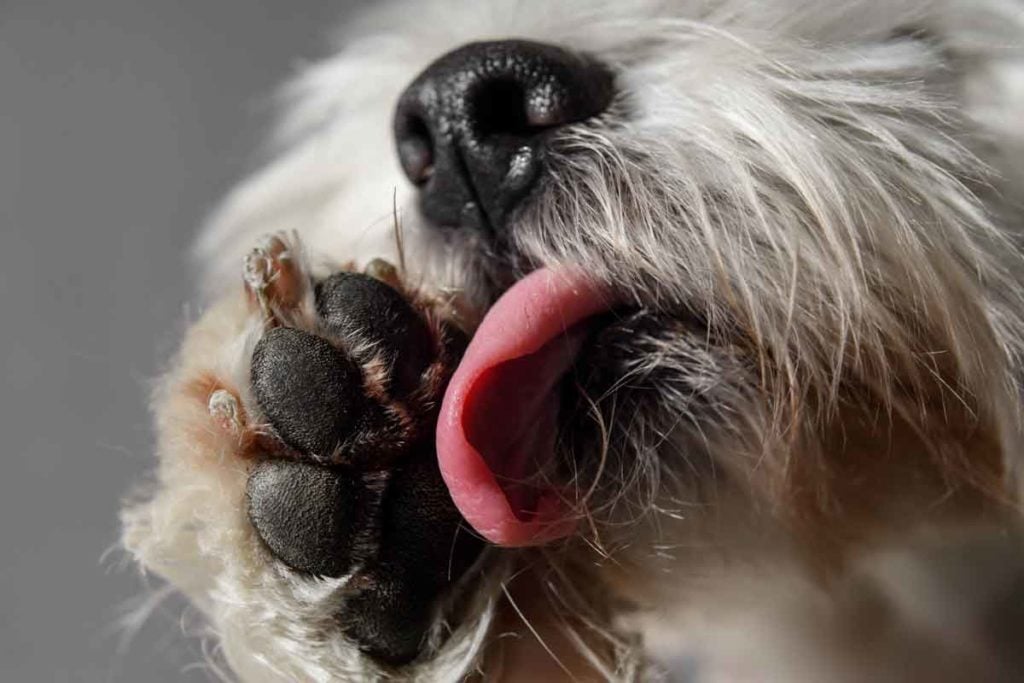How To Get Your Dog To Stop Licking His Paws

Is your dog incessantly licking their paws? Constant paw licking can signal underlying issues demanding immediate attention and intervention.
This guide provides a comprehensive overview of the common causes of excessive paw licking in dogs and outlines actionable steps you can take to address the problem effectively. Addressing this behavior promptly can prevent secondary infections and improve your dog's quality of life.
Identifying the Root Cause
Allergies are frequently implicated. Food allergies or environmental allergens like pollen, dust mites, and mold can trigger itchy paws.
Parasites, such as fleas and mites, are another common culprit. These tiny creatures can cause intense itching and irritation, leading to excessive licking.
Pain is a significant contributor. Injuries, arthritis, or even a foreign object lodged in the paw can cause discomfort and subsequent licking.
Behavioral issues also play a role. Anxiety, boredom, or stress can manifest as compulsive paw licking.
Conduct a Thorough Examination
Begin by carefully examining your dog's paws. Look for redness, swelling, cuts, or foreign objects.
Check between the toes and around the paw pads for any signs of irritation. Note any unusual odors, as they could indicate a yeast or bacterial infection.
If you observe any abnormalities, schedule a vet visit. Early detection is crucial.
Immediate Relief Strategies
A simple saline solution can soothe irritated paws. Gently clean the affected areas with a soft cloth soaked in the solution.
Epsom salt soaks can alleviate inflammation and draw out impurities. Soak your dog's paws in a warm Epsom salt solution for 5-10 minutes.
An anti-itch spray formulated for dogs can provide temporary relief. Choose a product recommended by your veterinarian.
Consider using an Elizabethan collar (cone) to prevent licking. This will give the paws a chance to heal.
Dietary Adjustments
Consult with your vet about a potential food allergy. They may recommend an elimination diet to identify triggering ingredients.
Consider switching to a limited-ingredient diet. These diets contain fewer potential allergens.
Adding omega-3 fatty acids to your dog's diet can reduce inflammation. Fish oil supplements are a good source.
Environmental Management
Regularly clean your dog's bedding to remove allergens. Wash it in hot water and use a hypoallergenic detergent.
Vacuum frequently to minimize dust mites and pollen. Pay close attention to areas where your dog spends the most time.
Use an air purifier to reduce airborne allergens. This can significantly improve air quality.
Wipe your dog's paws after outdoor walks. This will remove pollen and other irritants they may have picked up.
Veterinary Intervention
If home remedies don't work, seek professional help. A veterinarian can diagnose the underlying cause and recommend appropriate treatment.
Your vet may perform allergy testing to identify specific allergens. This will guide treatment decisions.
Prescription medications, such as antihistamines or corticosteroids, may be necessary. These medications can alleviate itching and inflammation.
In cases of infection, antibiotics or antifungals will be prescribed. It is critical to administer the entire course of medication.
Behavioral Modification
If anxiety is suspected, consult a certified dog trainer or veterinary behaviorist. They can help identify triggers and develop a behavior modification plan.
Provide your dog with plenty of exercise and mental stimulation. This can help reduce boredom and anxiety.
Use positive reinforcement techniques to redirect your dog's attention. Reward them with treats or praise when they stop licking.
Consider using interactive toys to keep your dog occupied. Puzzle toys can provide mental stimulation and prevent boredom.
Long-Term Prevention
Maintain a consistent flea and tick prevention program. This is essential for preventing parasitic infestations.
Regularly groom your dog to remove loose fur and debris. This will help reduce skin irritation.
Continue to monitor your dog's paws for any signs of irritation. Early detection is key to preventing recurrence.
Work closely with your veterinarian to manage any underlying health conditions. Effective management can minimize paw licking.
Persistent paw licking warrants veterinary attention. Prompt action and a multifaceted approach are essential for resolving this common canine concern and ensuring your dog's well-being. Continue monitoring your dog and consult with your veterinarian for any persistent or worsening symptoms.
